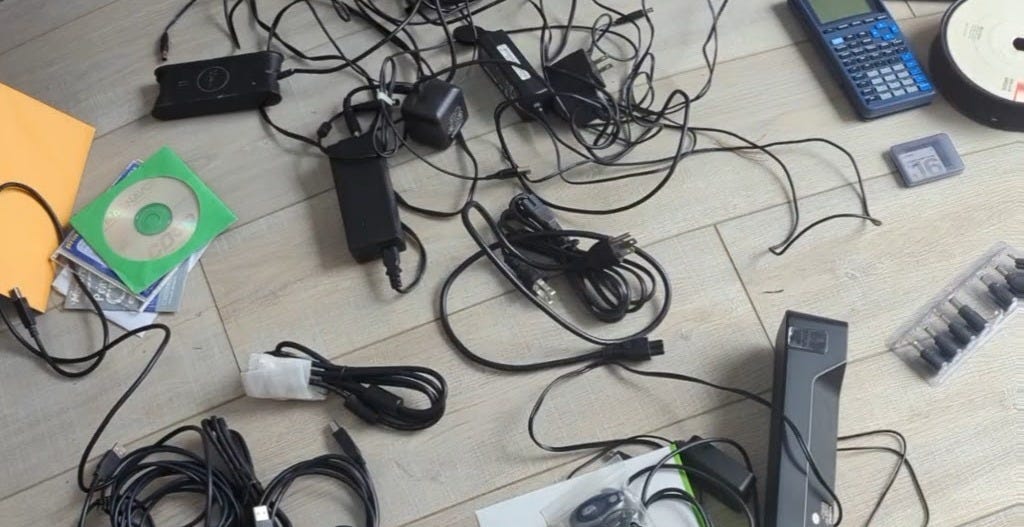State of Broadband
Combating Waste and Fraud (Am I DOGE?!)
Early in the Biden presidency, mired in an economic slump and a populace reeling from over 18 months of online classes, doctor’s visits, banking, and even buying groceries, it was seen as critical to get as many people online as possible. The President announced a $42 Billion effort called the Broadband, Equity, Access and Deployment (“BEAD”) Act. As of today (June 2025) not a single dollar has been spent and no houses have been connected through this funding.
Somewhat shockingly I find myself aligning with Melania: “I really don’t care, do u?”
Fraud Waste and Abuse
This may seem like a crazy position. Article after Article after Article (after Article after Article, etc etc etc) proclaim BEAD to be the most egregious example of government grift in modern history. But, it isn’t.
BEAD is a well-designed program intended to move slowly and ensure accountability for both the government and the Internet Service Providers receiving the money. Given the history of this kind of money, the program is actually trying to avoid the government waste and private inurement that has plagued every such initiative. Going back to 2009, numerous attempts and billions of dollars have been wasted on obsolete technology and broken promises.
2023 - Rural Digital Opportunity Fund ($20B)
2018 - ReConnect Broadband ($700M)
2014 - CAF I and CAF II ($10B)
2009 - American Recovery and Rescue Act ($7B)
Broadband Equity, Access, and Deployment
BEAD was an attempt to change that. The program had generational funding (over $42 Billion). It promised fiber deployment to every corner of the country. Both parts are important and are critical to the words “equity” and “access” in BEAD. First, equity means that everyone has the same opportunities; access means everyone has a connection. Everyone. Let me repeat that. Everyone. From the urban poor, to the suburban rich, to the rural farms. It demanded fiber because fiber is future proof. Data travels, literally, at the speed of light; in other words, the wire itself will never be obsolete - maybe the hardware connected to the wires, but fiber optic cable will never go obsolete.
BEAD demanded fiber to make sure everyone everywhere it is deployed have equal access. Yes, it discriminated against other forms of deployment. Fixed wireless deployments like BugTussel are not reliable in inclement weather and have limited range and (relatively) slow speeds, not to mention are functionally useless if there are hills or trees. Satellite providers like Starlink and Hughes are (somewhat to extremely) slow, subject to weather disruptions, and owned by Elon Musk (Starlink).
Moreover, related to the access prong of BEAD, the scoring criteria favors hard to access (read: expensive) places. These are places like Northern Wisconsin where there are a lot of hills, a lot of trees, and very hard rock just below the surface - in other words, they are very very expensive to lay fiber with sparse populations. For example, buried fiber costs between $10 and $27 per foot ($52,000 to $142,000 per mile) depending on terrain (fixed wireless, by comparison is $5 to $14 per foot). I should point out that, particularly in Wisconsin but even in Dane County, our most remote places are often not suitable for fixed wireless (remember? hills and trees?). Thus equity and access demand fiber deployment.
BEAD was never intended to connect everybody. Indeed its scoring criteria and intentional rollout actively prevented that. But, it was intended as a program to connect the hardest to connect. Those who live in places that are hard to connect (rural) and those that live in places where it isn’t affordable for ISPs to connect (urban poor).
Fraud and Waste Revisited
In early June, the Trump Administration revised the BEAD rules and is now requiring states to consider projects that might include fixed wireless or satellite. These new rules “ease administrative burdens” (a euphemism for removing accountability) and make the program “technology neutral” (a euphemism for eliminating the fiber requirement so Elon Musk’s Starlink qualifies for the money).
By diluting the awards to allow fixed wireless and satellite we are undermining, and indeed gutting, the very equity and access goals of that the Broadband Equity, Access and Deployment Act was intended to cover. This will just be another case of government waste and fraud perpetuated by the very administration that proclaims to be eliminating it.
Why You Should Believe Me
DId you know I used to be a software developer? Did you know that I wrote my first computer game (a Zork-style text adventure game) when I was 8? I went to law school in 2001, leaving my job as a software developer at a Fortune 500 company because I was more interested in technology policy than in telling the technology what to do (as you’re probably aware, technology doesn’t listen very well, sometimes…). I played nerdy spaceship bulletin board service games in the 1980s. I got my first email address in 1993 (Earthlink for the curious). I used ICQ and IRC regularly. I graduated law school in 2004 and worked as an intellectual property and technology lawyer. I have switched teams and now work on the policy side of law, including helping communities understand internet deployment strategies in Wisconsin. I am the Chair of the Dane County Broadband Taskforce. I’ve been following these issues for a long, long time.

